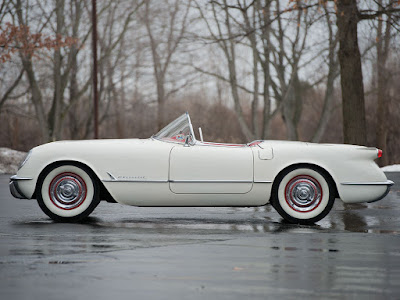SEVEN CORVETTE FEATURES OR MODELS WE DON'T MISS
 |
| SEVEN CORVETTE FEATURES OR MODELS WE DON'T MISS |
Side Curtain Windows (1953-55)
The first Corvette was as far as anyone knows raced into generation an inadequate six months after it was appeared as an idea auto at the 1953 General Motors Motorama. More probable, the real choice was made no less than a year or so prior; still, this is a short advancement period for a games auto. The side drapes were one of those concessions to a tight generation plan. Most definitely, they spilled. Obstinate Corvette proprietors who took a stab at driving their autos in the rain normally kept an espresso can close-by to ransom rain that spouted in notwithstanding when the side window ornaments were set up.
The blinds were really an arrangement of transparent plastic windows with chrome outlines. Posts at the lower edge were embedded into gaps at the highest point of the entryway boards. The issue was, they simply didn't fit exceptionally well. They were supplanted by move up windows in the 1956 update.
T-Tops (1968-82)
They appear to be so 1968, yet the first thought had justify. These were the creation of Gordon Buehrig, who composed the first Art Deco-affected Cord 810/812. Buehrig's thought was to give a convertible-like feel without resorting to a canvas beat. Also, truth be told, T-beat rapidly turned out to be popular to the point that they may have hurried the end of the convertible by the mid '70s. In any case, T-beat later turned out to be more celebrated for spilling or rattling. T-Tops were supplanted with a removable rooftop board on the Gen Four Corvettes, a climate tight arrangement that halted the rattles.
Vega directing wheel (1976)
Most Corvette devotees concur that the mid-1970s were the auto's execution nadir, a consequence of new outflows laws that required unleaded gas. Yet, maybe the surest indication of the critical circumstances was a cost-cutting move that Corvette drivers could take a gander at each time they drove: the change to a shaped vinyl guiding wheel in '76. Previous Corvette boss architect David McLellan wrote in his book, Corvette From the Inside, that the wheel originated from the Chevy Vega minimal and was requested by a senior GM authority to spare cash. Gratefully, the vinyl wheel kept going just a single year.
Corvette Collector Edition (1982)
The C3 Corvette was in its fifteenth year of generation in 1982, an exorbitantly long time for any auto. While everybody knew the C4 was coming, Chevrolet needed to accomplish something to help offer the intermediary 1982 models. That something was the Corvette Collector Edition. In a pitiful endeavor to look after intrigue, Chevy included Cross-Fire throttle-body fuel infusion to the 5.7-liter little square V-8, raising aggregate yield to a disappointing 200 pull – and afterward dispensed with the manual transmission choice. The outside included a metallic beige shading and finned wheels.
Doug Nash 4+3 manual transmission (1984-88)
By the mid '80s, the respected four-speed manual transmission was being supplanted by five-speed manuals, some with overdrive outfits that offered better efficiency. At the point when the C4 Corvette appeared, a four-speed manual was standard, however later in the year, a 4+3 transmission worked by Doug Nash, a provider of dashing parts, with three overdrive gears got to be distinctly accessible. The gearbox was a development of the Borg Warner T-10 four-speed manual. The transmission was fine for ordinary driving, yet was touchy to the energetic driving that Corvettes are liable to – and poor unwavering quality and solidness. As indicated by one writer, Hib Halverson, "The gearbox segment was an entirely decent piece, however the overdrive unit was a catastrophe."
Corvette ZR-1 (1990-95)
The auto was mechanically complex and its execution great. However, is this the greatest bust ever for the authority auto showcase? No doubt way. The "Lord of the Hill" Corvette was reputed for a considerable length of time, and when it at last burst onto the scene in 1989 it claimed essentially every auto magazine cover on the planet. It was a real supercar for the time, however its 385 torque (later 405) created by its Lotus-planned LT5 32-valve V-8 could not hope to compare with numerous autos today. The ZR-1 never got on, however; the $30,000 the ZR-1 alternative cost may have been the reason. Generation declined and cost expanded, and less individuals were eager to pay for a motor choice that cost practically as much as a routine Corvette alone. A few theorists purchased new ZR-1s to put away, hoping to be remunerated years after the fact with tremendous money related appreciation. That never happened.
1995 and 1998 Corvette Pace Cars
Corvette Indianapolis 500 Pace Car copies are an exceptionally subjective thing, particularly with regards to whether you truly need all the consideration that stopping one in your garage may bring. The 1995 rendition, with its blend of a white lower body and a purple-maroon upper, was conspicuous, yet the 1998 C5 variant may have topped it. Its purple-and-yellow outside was complemented by yellow haggles embeds in the seats. A couple of people adored it, others not really.






















0 comments:
Post a Comment